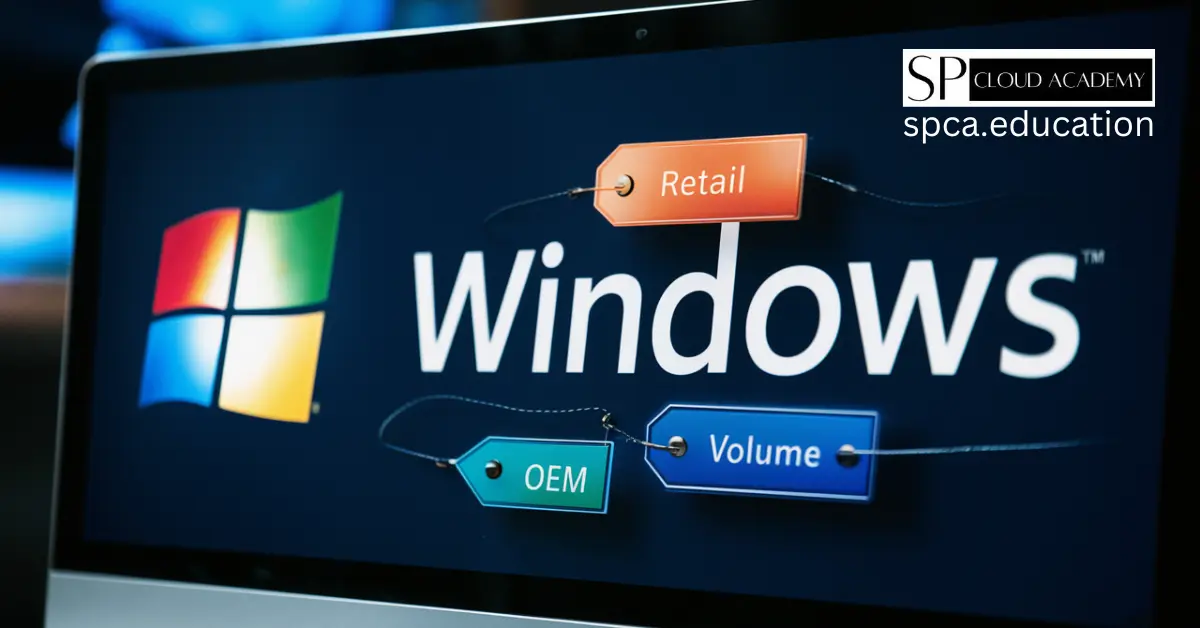Stock Android, often referred to as “pure” Android, is the unaltered version of the Android operating system as envisioned by Google. It represents the baseline Android experience, devoid of manufacturer-specific customizations and bloatware that often come pre-installed on smartphones. Stock Android features a clean, minimalist user interface, focusing on simplicity and performance. It offers timely updates and security patches directly from Google, ensuring the latest features and security enhancements.
This unadulterated Android experience is renowned for its speed, fluidity, and efficient resource management. It’s the choice for users who prioritize a clutter-free, responsive interface and rapid access to Google services. Stock Android is prominently found on Google’s own Pixel devices and is also available through the Android One program on select smartphones from other manufacturers. In this article, we’ll explore the characteristics, advantages, and considerations associated with Stock Android, helping you make informed choices in the diverse world of Android smartphones.
Android OS Categories
When categorizing Android operating systems, they can be broadly divided into the following categories:
- Stock Android: Stock Android refers to the pure and unaltered version of the Android operating system as developed by Google. It offers a clean and minimalist user interface with no manufacturer-specific customizations. Devices running Stock Android include Google Pixel phones and some Android One devices.
- Custom Android Skins: Many manufacturers modify the Android OS to create custom Android skins. These skins often include unique features, visual customizations, and pre-installed apps. Examples of custom skins include Samsung’s One UI, Xiaomi’s MIUI, and OnePlus’ OxygenOS.
- Android Go (Android (Go edition)): Android Go is a lightweight version of Android designed for entry-level smartphones with limited hardware resources. It offers a simplified user interface and optimized versions of Google apps for smoother performance on low-end devices.
- Android One: Android One is a program initiated by Google in collaboration with manufacturers to offer a near-stock Android experience on various devices. Android One devices receive timely updates and are known for their clean and minimalistic interface.
- Custom ROMs: Enthusiasts and developers often create custom ROMs based on Android. These ROMs can be categorized based on their features, customizations, and the Android version they are built on. Examples include LineageOS, Paranoid Android, and more.
These categories represent the diversity of the Android ecosystem, offering a range of experiences and customization options for users, from the pure simplicity of Stock Android to the feature-rich customizations of custom Android skins.
Advantages of Stock Android
Stock Android, with its pure and unaltered user experience, offers several advantages that make it appealing to many users. Here are some of the key advantages:
- Clean and Streamlined User Interface: Stock Android features a minimalist design that is easy to navigate, free from unnecessary visual clutter. This simplicity enhances user-friendliness.
- Speed and Performance: Stock Android is optimized for efficiency, resulting in fast and responsive performance. It runs smoothly even on mid-range hardware, ensuring a snappy user experience.
- Timely Updates: Stock Android devices receive prompt updates directly from Google. This includes not only major Android OS updates but also regular security patches, keeping your device secure and up-to-date.
- Enhanced Security: Google’s commitment to security is evident in Stock Android. Google Play Protect scans apps for potential threats, and the regular security updates provide robust protection against evolving security risks.
- Minimal Bloatware: Stock Android devices come with minimal pre-installed apps and bloatware, giving users more control over their device’s storage and experience. You can choose which apps to install according to your preferences.
- Google Services Integration: Stock Android seamlessly integrates with Google services, including Google Assistant, Google Photos, and Google Drive. This tight integration ensures a cohesive experience for users deeply embedded in the Google ecosystem.
- Customization: While Stock Android is known for its simplicity, it also allows for a degree of customization. Users can personalize their device with widgets, wallpapers, and third-party launchers if desired.
- Compatibility: Stock Android apps and features are designed to work seamlessly across a wide range of devices. This ensures compatibility and consistency, making it easier to switch between different Android devices.
- Developer-Friendly: Stock Android is often favored by developers and enthusiasts for its openness and ease of modification. It’s an ideal platform for those who want to experiment with custom ROMs and software tweaks.
- Longevity: Stock Android devices tend to have longer software support, extending the life of your smartphone and ensuring you can enjoy the latest features and security updates for a longer period.
These advantages make Stock Android an attractive choice for users who prioritize a straightforward and efficient mobile experience, as well as those who value timely updates and security.
Disadvantages of Stock Android
Certainly, here are some of the disadvantages of Stock Android:
- Limited Customization: Stock Android offers fewer customization options compared to some custom Android skins. Users who enjoy extensively personalizing their device may find it lacking in this regard.
- Performance Dependency on Hardware: Stock Android’s performance can be heavily influenced by the hardware it runs on. While it runs well on most devices, it may not take full advantage of high-end hardware capabilities.
- Lack of Exclusive Features: Stock Android may lack some exclusive features and software enhancements found in custom Android skins. These features can vary from one manufacturer’s skin to another, potentially missing out on unique functionality.
- Availability and Cost: Stock Android devices, especially Google’s Pixel series, are not always as widely available as other Android options. Additionally, they can come with a premium price tag, making them less affordable for some users.
- Simplicity May Be Limiting: While the simplicity of Stock Android is an advantage for many users, some might find it overly restrictive and prefer the added features and options offered by custom Android skins.
- Inconsistent User Experience: While Stock Android ensures a consistent experience across different devices, it can also mean that users miss out on the unique features and innovations that some manufacturers introduce through their custom skins.
- Less Brand-Specific Integration: Stock Android may not fully leverage brand-specific hardware features or integrations that some manufacturers include in their custom Android versions. This can limit the use of certain device-specific functionalities.
- May Not Cater to All Preferences: Stock Android is designed with a particular vision of simplicity and functionality. It may not cater to users who prefer a more visually elaborate or feature-rich user interface.
It’s essential to consider these disadvantages in the context of your personal preferences and requirements when choosing an Android device. While Stock Android offers a pure and efficient experience, it may not be the best fit for everyone.
Here’s a comparison table highlighting the advantages and disadvantages of Stock Android:
| Advantages of Stock Android | Disadvantages of Stock Android |
|---|---|
| Clean and efficient interface | Limited customization options |
| Speed and performance | Performance influenced by hardware |
| Timely updates | Lack of exclusive features |
| Enhanced security | Limited availability |
| Minimal bloatware | Premium price tag (for some) |
| Google services integration | |
| Compatibility | |
| Longevity |
This table provides a concise overview of the key pros and cons of Stock Android, helping users make informed decisions about whether it aligns with their preferences and priorities.
Devices and Manufacturers with Stock Android
Several devices and manufacturers offer Stock Android or close-to-stock Android experiences. Here are some notable ones:
- Google Pixel Series: Google’s Pixel smartphones are known for providing the purest Stock Android experience. They receive prompt Android OS updates and security patches directly from Google. Examples include the Google Pixel 6 and Google Pixel 6 Pro.
- Android One Program: Android One is a program initiated by Google that partners with various manufacturers to offer Stock Android on a range of devices. Prominent manufacturers in the Android One program include Nokia, Motorola, and Xiaomi. Some Android One devices include the Nokia 6.1, Motorola One Power, and Xiaomi Mi A2.
- Samsung (One UI with Android Stock Mode): While Samsung uses its custom One UI skin on most of its devices, some Samsung smartphones offer an option called “Android Stock Mode” or “Stock Android Experience,” which provides a closer-to-stock Android interface. This option is available on select Samsung devices, such as the Samsung Galaxy S21 and Galaxy Note series.
- Asus (ZenFone Series): Asus has released some smartphones in its ZenFone series with near-stock Android experiences. These devices offer a cleaner interface compared to Asus’s custom ZenUI skin.
- Sony (Xperia Series): Sony’s Xperia smartphones run a relatively close-to-stock Android experience with minimal customizations. Sony focuses on a clean and efficient UI.
- Moto G and Moto E Series: Motorola’s Moto G and Moto E series devices are known for their near-stock Android experience. They receive timely updates and provide a clean interface with a few useful Motorola-specific enhancements.
- LG (Select Models): While LG primarily used its custom interface, it offered some smartphones with close-to-stock Android experiences in the past. The LG G7 ThinQ, for example, featured a relatively clean interface.
- Lenovo (Moto Series): Lenovo-owned Motorola’s Moto series often provides a near-stock Android experience with timely updates and minimal bloatware.
- OnePlus (OxygenOS): OnePlus devices traditionally used OxygenOS, which offered a near-stock Android experience with a few added features and customizations. Note that OxygenOS has evolved, and its stock Android-like experience may vary across OnePlus device generations.
It’s essential to note that manufacturers can update their software and UI over time, so it’s a good idea to check the latest software offerings when considering a device. While some manufacturers may offer stock-like experiences on some devices, others focus more on customizations and unique features. The availability of Stock Android or near-stock experiences can vary by region and device model.
How to Get Stock Android
Getting a Stock Android experience can be achieved through several methods, depending on your current device and preferences. Here are some ways to get Stock Android:
- Purchase a Stock Android Device: The simplest way to experience Stock Android is to buy a smartphone that comes with Stock Android out of the box. Google Pixel devices and Android One program phones are the most well-known examples of this. Ensure that the device you choose is part of the Android One program or specifically advertises a Stock Android experience.
- Custom ROM Installation: If you already own an Android device and it has an active developer community, you may be able to install a custom ROM that provides a Stock Android experience. Some popular custom ROMs that mimic Stock Android include LineageOS and Paranoid Android. Be cautious when installing custom ROMs, as it can void warranties and may require technical expertise.
- Use a Launcher: You can download and install a third-party launcher from the Google Play Store to change the look and feel of your device’s interface. Some launchers, such as Nova Launcher and Action Launcher, offer customization options that can make your device’s interface resemble Stock Android.
- Minimize Customizations: Many Android devices allow you to reduce or disable manufacturer-specific customizations. You can often find these options in the device’s settings menu. Reducing animations, changing the default apps, and tweaking the notification settings can help make the experience closer to Stock Android.
- Android Go Edition: Android Go Edition is a version of Android designed for entry-level smartphones with limited hardware resources. It offers a lighter, more streamlined Android experience. If you have a low-end device or are looking for a more minimalistic experience, consider devices that run Android Go Edition.
- Install Stock Apps: You can replace manufacturer-specific apps with Google’s stock apps for a more Stock Android-like experience. For example, you can install Google’s Phone, Messages, and Contacts apps to replace the manufacturer’s versions.
- Purchase a Google Play Edition Device (if available): In the past, some manufacturers released “Google Play Edition” devices that offered a near-stock Android experience. These devices could be purchased directly from the Google Play Store.
- Choose Manufacturers Known for Stock Android: Some manufacturers, like Motorola, Asus, and Nokia, are known for providing a close-to-stock Android experience on many of their devices. Research these manufacturers and their device offerings to find one that suits your preferences.
Before making any significant changes or purchases, make sure to research and understand the implications for your specific device and region. Customizing your device’s software can sometimes lead to unintended consequences, such as voiding warranties or causing compatibility issues.
Conclusion
In summary, Stock Android stands as a testament to simplicity and efficiency in the world of mobile operating systems. It excels with its clean design, snappy performance, and the assurance of prompt updates and security patches. These qualities make it an attractive choice for users who prioritize a straightforward and secure Android experience. However, Stock Android’s limitations, such as limited customization and potential hardware dependency, must be considered. When making a device choice, users should weigh the benefits of speed and reliability against the desire for customization, ultimately finding the balance that aligns with their preferences and priorities in the ever-evolving Android landscape.
FAQs
Here are some frequently asked questions (FAQs) related to Stock Android:
1. What is Stock Android?
Stock Android, also known as “pure” or “vanilla” Android, is the unmodified version of the Android operating system as developed by Google. It represents a clean, minimalistic, and unaltered Android experience without manufacturer-specific customizations or bloatware.
2. Which devices run Stock Android?
Stock Android is prominently found on Google Pixel smartphones and devices participating in the Android One program. Some manufacturers, like Motorola, Asus, and Nokia, also offer near-stock Android experiences on select models.
3. What are the advantages of Stock Android?
Stock Android offers a clean user interface, high performance, timely updates, enhanced security, minimal bloatware, and seamless integration with Google services. It’s known for its compatibility and often receives longer software support.
4. Are there any disadvantages to Stock Android?
Stock Android may have limited customization options compared to custom Android skins, and its performance can be influenced by hardware. It may lack certain manufacturer-specific features, and Stock Android devices can sometimes come with a premium price tag.
5. How can I get Stock Android on my device?
You can obtain Stock Android by purchasing a Stock Android device (e.g., Google Pixel), installing custom ROMs like Android x86, using third-party launchers to mimic the experience, or minimizing customizations on your existing device.
6. What’s the difference between Stock Android and custom Android skins?
Stock Android offers a pure and minimalistic experience, while custom Android skins, created by manufacturers, provide additional features, visual customizations, and brand-specific enhancements. The choice depends on user preferences for simplicity, customization, and additional features.
7. Is Stock Android available in Android tablets?
Yes, some Android tablets also run Stock Android. Devices like Google’s Nexus tablets and some Android One tablets provide a close-to-stock Android experience.
8. Does Stock Android receive faster updates?
Yes, Stock Android devices, especially Google Pixel phones, receive prompt Android OS updates and security patches directly from Google, typically faster than devices with custom Android skins.
9. Can I install Stock Android on my existing device?
You can install custom ROMs like Android x86 or use third-party launchers to make your device resemble Stock Android. However, the level of customization and experience may vary.
10. Is Stock Android suitable for all users?
Stock Android is ideal for users who prioritize simplicity, speed, and security. However, those who prefer extensive customization and exclusive manufacturer features might find custom Android skins more appealing. The choice ultimately depends on individual preferences and priorities.



